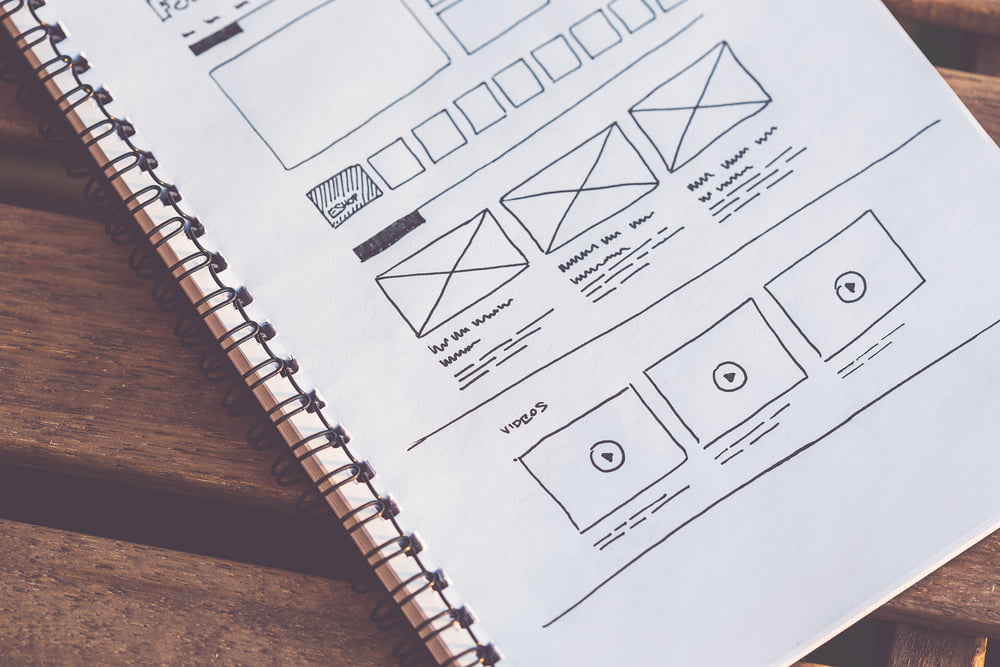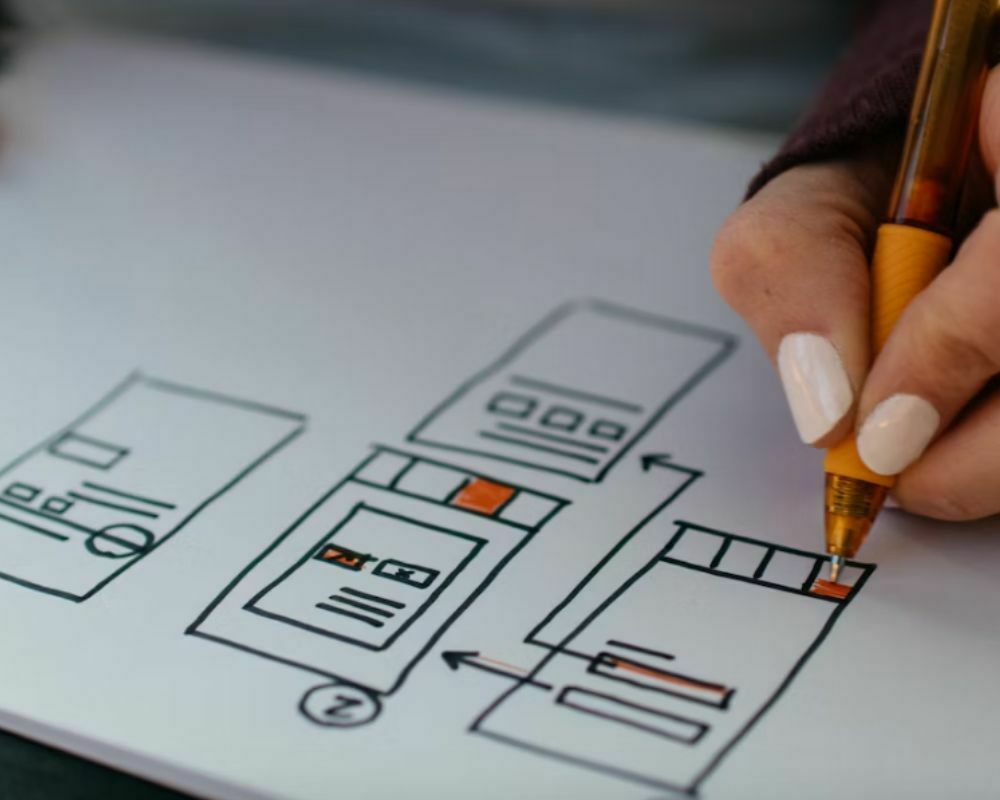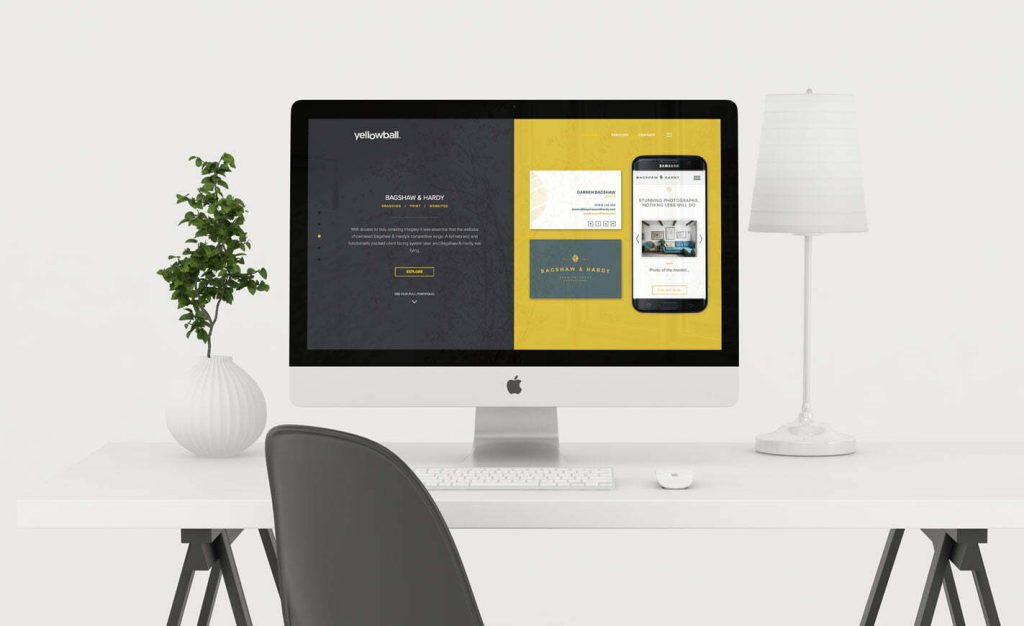Our team of website and graphic design team has put together a guide to what makes a good website, looking at the design principles that make a website truly effective as a digital brand platform.
8 Principles of Good Website Design:
- A Clear Purpose
- Strong Visuals and Branding
- Simplicity
- Design Layout
- Fast Page Load Speed/Load Times
- Great, Relevant Content
- Mobile-Friendly Sites
- Security
1 – A Clear Purpose
What is it that you want your website to do? The main functions of your website will help define the design and is especially critical in the early stages of web development. After all, a website that needs to inform and empower people is different to one that is designed to entertain, or one designed to sell a product, so its purpose must align with your business goals.
This question should also be asked when designing each page of the website so that when a potential customer lands on that page, they know exactly what it’s about and the actions they need to take.
The most common core purposes for a website or webpage are:
- To show your expertise/authority
- To build your online presence/brand
- To generate leads
- To make sales and supply after-sales services
2 – Strong Visuals and Branding
Visual appeal and aesthetics have been found to support the usability of websites as well as satisfaction levels from using these websites, appealing to our ability to recognise shapes, respond emotionally to colour, and trigger our imaginations.
When considering visual elements, be sure to go beyond high-quality imagery and look at different colour palettes, typography, and imagery. This should connect with your brand and brand personality to show target customers who you are, as this may be their first interaction with your business. It also helps to create a colour-coded, hierarchical system for easier, more intuitive navigation through the website, improving customer experience.
Visual Hierarchy in Web Design
Visual hierarchy in web design is important because it helps to direct user focus by organising design elements in order of importance. This uses colour, contrast and size to highlight priorities and enhance user experience.
3 – Simplicity
A website where there’s just too much going on is going to overwhelm your visitor and likely cause them to leave. Today’s internet users want to find the information they are looking for – quickly. And that means one of our key design principles is to create something simple and streamlined.
A simple approach also allows you to properly highlight what makes your business different, showcases star features and allows a potential customer to make that satisfying connection. It creates and shows the essence of your business. For example, if you sell handcrafted solid wood doors, having that single image of a luxurious, bespoke front door opening into a sunlit home will inspire that feeling of “That’s how I want to live”. Having every door that you sell with a hundred small thumbnails and text all on the same page just won’t deliver that emotional connection and satisfaction.
4 – Design Layout
Website design is as much about what you add to your website as it is about how you add it. That’s where the design layout comes in.
F-Shaped pattern reading
Use elements such as using F-shaped pattern reading to work with how our eyes are trained to track through text, to create a natural feel for your visitor.
White space
White space provides breathing room for the reader’s eyes, to allow them to focus on the elements you want to draw them towards, and minimises distractions that can draw them away from the actions you want them to take. Like F-pattern reading, it works with how our brains naturally move through chunks of information and take in new material, creating balance and breathing room in the design and ultimately, the user experience.
5 – Fast Page Load Speed/Load Times
Page load speeds have a significant impact on user experience, with slower pages having significantly higher bounce rates (the percentage of visitors leaving your website without taking any actions) and low conversion rates (potential customers taking an action, such as buying a product)
Because of this, Google has made page speed one of the key elements that its algorithm monitors. It will use this to rank website content in user search results, so a fast website is very important for search engine optimisation (SEO) too. Google allows you to monitor page load times and key elements of website performance through Page Speed Insights and sets a benchmark at 2 seconds as ideal load time.
6 – Great, Relevant Content
If web design is like the structure of a building, then the content is what turns it into your brand’s showroom. Good quality content should be simple, in touch with your brand and potential customers, and informative with strong calls to action. Compelling language not only tells your customer that they’ve come to the right place, but it also projects your authority and trustworthiness, helping them to feel confident in doing business with you.
Good quality content is also critical for SEO, expertly placing keywords so that the search engines can match you up more effectively with the people who are looking for your business offering. When creating content, remember to stay away from black hat SEO techniques that sound like quick and easy fixes but can land your website in hot water.
Instead, keep your content relevant, well-written, and error-free. It also helps to boost your SEO to include regular blog posts filled with content that assists your target audience. This injection of fresh, relevant content through blog posts helps promote engagement, gives you content to spread on social media, and drives traffic from new sources, as well as being a good signal for the Google algorithm.
7 – Mobile-Friendly Sites
Any good website design works seamlessly on mobile devices, and with 58 million active mobile users in the UK alone spending 2-3 hours a day online, you’re missing out on a huge audience if your website isn’t mobile-friendly. And we really love using these devices, since mobile searches account for 50.88% of all online traffic. Whether we’re working or living on the go or the couch, we reach for our mobiles first when we want entertainment, a solution, or a product.
A mobile-friendly site should have full functionality, working contact forms, be free of glitches and errors, and be very fast-loading, as this has a significant impact on user experience and mobile conversions. It’s also worth considering making mobile-friendly sites lighter and less data-hungry (eliminating videos and optimising image sizes) to increase load times and preserve consumer data while making mobile searches.
8 – Security
Website security is essential, with the average cost of a cyber-attack in the UK sitting at £3,930 for medium to large businesses, and £2,600 for small and micro-businesses. Of course, these figures don’t take into account the downtime, damage to your reputation, and the costs of customers or suppliers who were targeted as a result.
We’ve written a great article on how to secure your website, but the basics include:
- SSL encryption – This gives your website better security, is a trust factor for potential customers and delivers a small SEO boost too.
- Hosting – Using a good host that offers web application firewall (WAF) and denial-of-service (DDoS) protection.
- Content management – Good content management systems like WordPress offer inbuilt and optional security features to help protect your website.
- Strong passwords – Implementing robust passwords for web administration and web accounts.
- Updates – Installing updates for software, third-party applications, and plugins as soon as they roll out to block vulnerabilities.
- Backups – Regularly backing up your website to a secure server to ensure minimal disruption and data loss if the worst-case scenario occurs.
What to avoid when designing a website:
- Choosing aesthethics over usability
- Over-designing
- Neglecting project management
Avoid choosing aesthetics over usability
This can vary dramatically depending on the motivation behind your redesign, however, more often than not there will be a requirement for what you might diplomatically call a ‘more pleasing aesthetic’. As a web design agency we would never suggest that you ignore how your website looks! However, the desire for an awesome design can be really distracting, and ultimately it can detract from the usability of the website. The end result can be a website that fails to deliver on conversions.
There are a number of key items that can help you avoid prioritising aesthetics over user flow, or at least ensure that the proper attention is afforded to use cases:
- Identify clear objectives – Create web development objectives to help influence the design and build of your website. Key project milestones such as website scoping, designs and user acceptance testing should always be reviewed in relation to the original objectives.
- Use analytics data – Utilise any analytics data you have to help you make data driven decisions for your new website. This might translate into clearer call to actions, the deletion of pages to streamline user flow or improving navigation structure.
- Include marketing goals in your website objectives – ensure your website is future-proofed and can facilitate campaigns across multiple channels.
Avoid over-designing
Over-designing is a very common pitfall when designing a website often stemming from trying to be all things to all people. Be discerning in the bells and whistles that you include on your site.
Pro tip: in order to decide whether a certain piece of functionality is warranted, .ask yourself what value it has in contributing to the website’s objectives.
Don’t neglect Project Management
Include stakeholders
Ensure to include key stakeholders at important milestones throughout the project, making sure to clearly establish at the outset of the project who the decision makers are. Again you’ll find that this process is far easier if you have your objectives defined – it aligns everyone to the end result.
Understand your resources
Websites are not just created by designers. They require resources from multiple touch points including developers, content creators and hosting providers. Where possible, you want to have a clear understanding of the resources available to you for the project.
What development skillsets do you have at your disposal and how will this dictate what is possible in terms of design? What imagery or video is available for the site? What hosting will be used and does this have an effect on content distribution?
All of these questions can directly impact the design of the site and also the amount of time it takes to deliver the project.
Yellowball is a multi-award-winning web design company in London specialising in website redesign, content marketing and digital marketing strategies. We work with businesses large and small, creating bespoke websites that shine online. Let our team show you what your online presence can do. Contact us today.
Find out more about building a website in our guides to building a website for small businesses, step-by-step guide to creating a website for business in 2025 and how to build a website from scratch.









